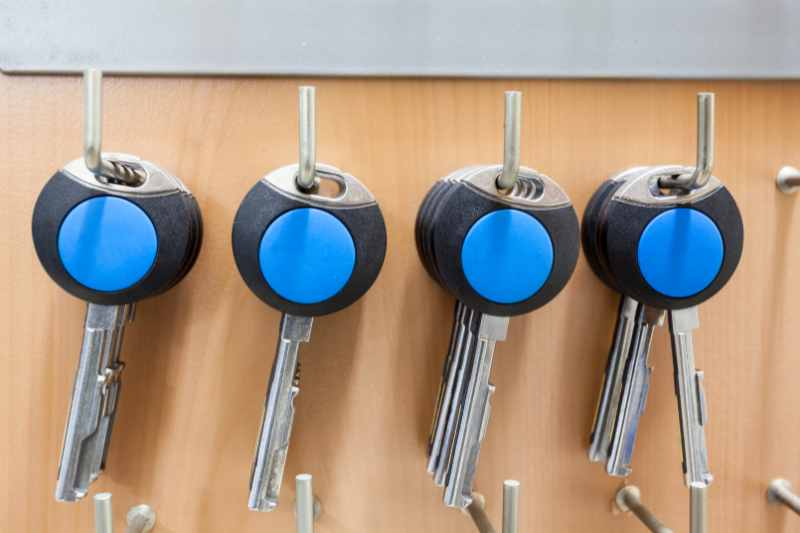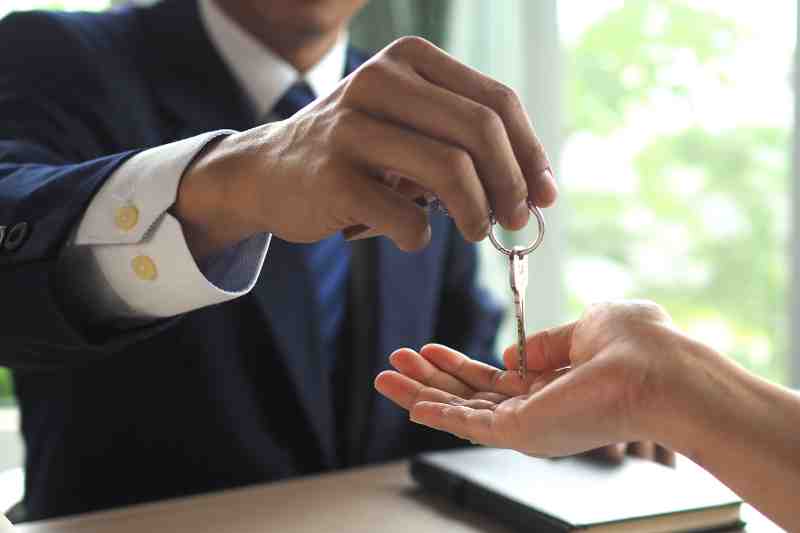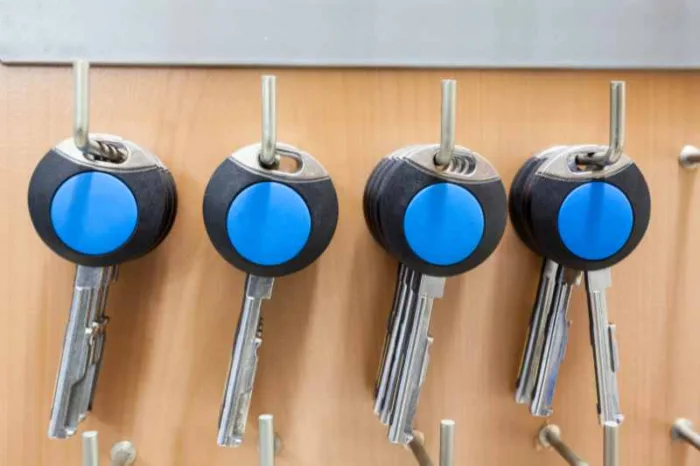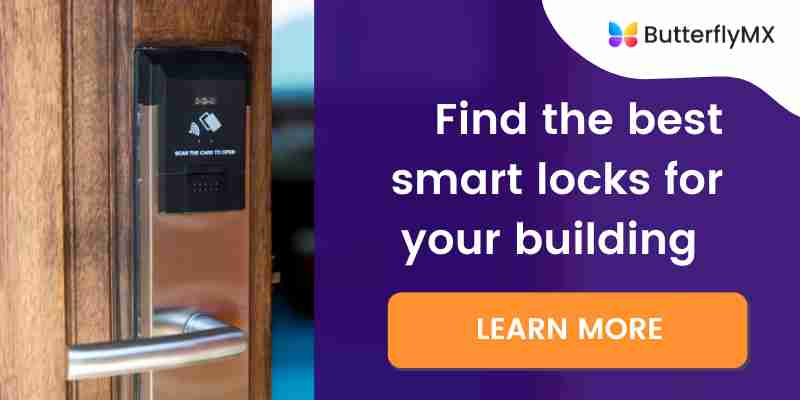Key takeaways
- A physical key management system is a way for you to keep track of all of your keys by combining a physical key container and record-keeping capabilities.
- You can keep track of keys with either pen and paper or with an electronic system.
- Some key management solutions include lock boxes, cabinets, or lockers.
- Dealing with keys is a hassle — many property managers prefer to do away with keys entirely, depending on other entry methods like PIN codes or a smartphone app.

What do prospective tenants, maintenance people, and your residents have in common? They all use keys as part of their day-to-day lives — and it’s your job to keep track of every key and make sure no keys are lost. You can use a physical key management system to make sure your residents and their visitors can unlock the doors they need to.
This post explains what a physical key management system is and goes over some common types. Then, it goes over different types of key management systems and helps you decide on the one that’s right for your property.
This post covers:
- What is a physical key management system?
- 3 types of physical key management systems
- The best physical key management system
What is a physical key management system?
A physical key management system is a solution that combines key storage compartments and record-keeping abilities that allow you to easily track the locations of every physical key on your property.
You might install a key lock box or a key cabinet to actually store keys. And to keep track of key locations, you can use either pen and paper or an electronic system.
Why is physical key management important?
Physical key management is important because it ensures that authorized people can retrieve and use physical keys to access various spaces without sacrificing convenience or security.
From maintenance closets to amenity spaces, buildings depend on keys to secure many critical areas. You can install key management systems to collect all of your property’s keys into one place and track where they are and who’s using them.
Instead of placing the burden on staff to manually keep track of individual keys, your facility’s key management system can make this part of their jobs easier.
Physical key management systems are helpful for:
- Enabling self-guided tours that allow prospects to visit units without needing assistance from an on-site leasing agent or property manager.
- Maintenance people who need quick access to secured spaces, like boiler or electrical rooms
- Residents who want a place where they can leave keys for visitors or service providers, like house cleaners and dog walkers

Physical key management record-keeping
To increase security at your property, staff members need to make sure nobody loses their keys or leaves the property with them. This means tracking who has which key and knowing how long that key is supposed to be signed out for.
In the past, properties had no choice but to rely on a person checking out a key to sign it out with pen and paper. But what if a person forgets to sign their key out, or writes down something illegible? And even if staff members are there, their other duties might prevent them from making sure records are manually filled in.
A better way to track keys is with physical key management software. Today, the best smart key management systems automatically detect key removals and replacements. They can also keep staff updated with automatic email notifications.
Here’s how ButterflyMX works:
3 types of physical key management systems
To store keys, you can choose between a couple of containers that vary in size and internal features.
Three main ways to manage a key checkout system include:
1. Key lock boxes
A key lock box is a small, locked box that typically holds up to one to two keys.
While they’re better than nothing, properties that have dozens of keys to keep track of might find it inconvenient to buy multiple key boxes. And because key boxes themselves are so small, it’s easier for an intruder to break the lock and retrieve the keys themselves.
Keep in mind, there are several variations of key lock boxes. This includes electronic key lock boxes, key lock boxes for outside, and multi-key lock boxes. If you must invest in key lock boxes as your key management system, be sure to choose the best variation for your property.

2. Key cabinets
A key cabinet is one large cabinet where you can hang all of the keys that your property uses.
Key cabinets are better for larger properties than key lock boxes. But staff and visitors still might find it difficult to use a key cabinet.
Because there’s only one, large space for every key, it’s very easy for a staff member to misplace a key — even when key cabinets are involved.
3. Key lockers
With a key locker, each key gets its own dedicated compartment. This way, it’s easier to tell at a glance which keys are out and which ones are still in the system.
Modern key lockers even come with compartments that open and close automatically when a visitor needs their key.
The best physical key management system
Move away from the hassle of traditional metal keys and upgrade to smart locks that integrate effortlessly with a comprehensive access control system like ButterflyMX.
ButterflyMX is a cloud-based access control provider installed in over 15,000 properties, with more than 20,000 customer reviews. Our platform seamlessly connects with smart locks, allowing you to replace physical keys with a mobile-based solution.
With ButterflyMX, your staff, tenants, guests, and service personnel can access the building using their smartphones. Our system offers complete property-wide control, managing access from front entrances and gates to elevators, amenities, and individual units.
Forget the need for physical key management. ButterflyMX streamlines the process with an easy-to-use operating system, accessible through our mobile app or online dashboard. From a single platform, you can track entry logs, adjust access permissions, and manage smart locks for a simplified and more efficient experience.






